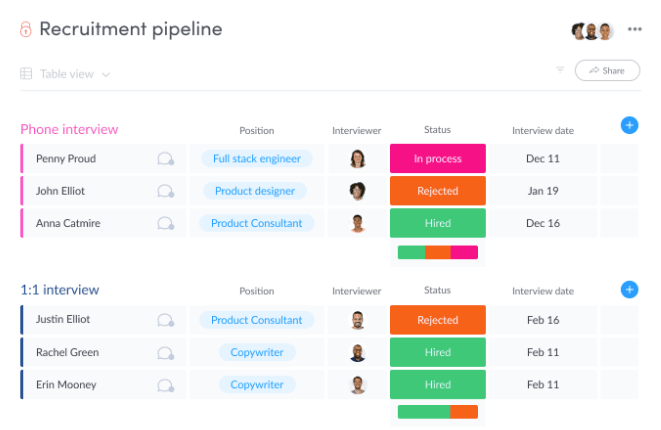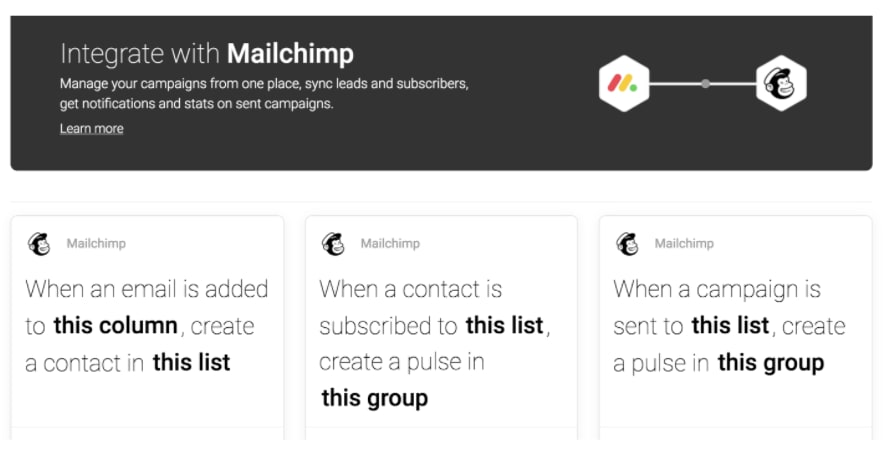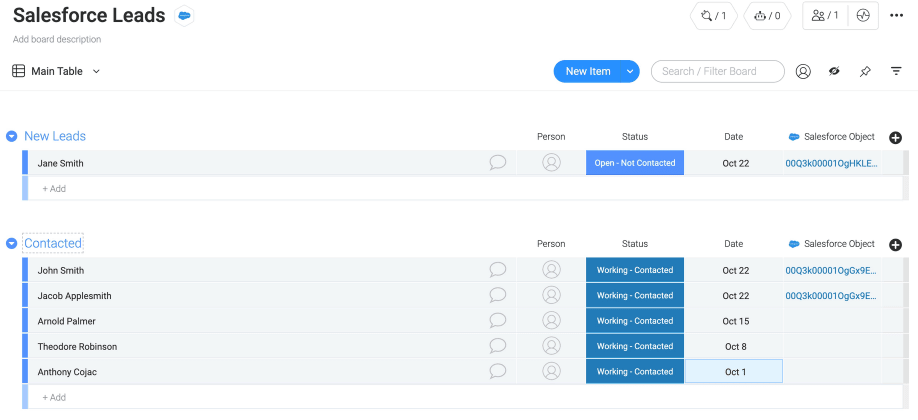We’ve all had managers that are more Godzilla than Mary Poppins but, assuming most are human deep down, why are some managers so great and some, well, not?
For most of us, becoming a good manager takes, like most things, training, practice, and experience. Once you’ve ticked those things off your checklist, there are a few other tools, techniques, and strategies that can move you from good to great.
Throwing an awesome Christmas party for example.
Ok, that might be a slightly superficial one.
This article, however, is anything but superficial. Read on for our guide to the top manager tools to help you bring your A-game in 2023. Seasonal cocktail recipes (sadly) not included.
Why you need manager tools
As we’ve said, you need more than tools to be a great manager. But, assuming you’ve done your homework on the other stuff, tools can be the icing on the cake.
So, why are they important?
Remote teams
Even before the arrival of Covid-19, remote and flexible working was on the rise. In the 15 years between 2002 and 2017, homeworking grew by over 25%. Employees looking to improve their work-life balance want more control over where, when, and how they work.
For managers, leading and organizing remote teams is one more skill to learn. And it’s a tricky one.
2020 has been an incredibly challenging year and building engagement, motivating your team, and ensuring performance doesn’t suffer is a lot to manage through a 13-inch rectangle.With employees working in different ways and, in some cases, across time zones, controlling and coordinating work is also more difficult than a quick check-in over coffee.
Tools that can help with remote working those that offer a route to:
- Greater visibility and transparency
- Ease of collaboration
- Shared digital workspaces for document control and storage
Talent retention
The US is currently facing a skills shortage. 75% of recruiters believe there is a skills gap in their applicants which leads to challenges in recruitment. Retention of top talent can provide a significant competitive advantage.
And, if you do manage to keep hold of your best employees, you certainly don’t want to waste their skills on administrative and mundane tasks.
Tools that can help with talent retention are those that:
- Automate routine, repeatable, or simple tasks
- Optimize processes to maximize the value of work being done
Operational benefit
As working life becomes more complex, and with uncertainty about what the future of work looks like in a post-Covid world, staying on top of operational performance metrics is important.
Managing resources effectively, whether financial, human, or material is key to efficient operations. Access to real-time data enables managers to make sure they maximize their effort in those areas that create the most value, and get rid of activities that don’t offer a good return.
Tools that can help with operational needs are those that improve:
- Cost control
- Resource management
- Time tracking
Employee engagement
Getting all of these things right has a number of benefits for employees. Most of us don’t want to spend our lives in pointless meetings or untangling ourselves from red tape.
We’re a lot more engaged and productive when work harnesses our talents and feels meaningful.
And, of course, better resource management means it’s less likely we’re either overburdened or sat twiddling our thumbs.
Manager tools for HR
The 2020 global pandemic has fundamentally shifted the way we approach work. And those managing HR policies and processes have been in the thick of it.
Recruitment, onboarding, people management, and remote working practices have all had to change. The employee experience and what employees are demanding of employers have shifted significantly.
Let’s consider traditional recruitment practices.
Depending on the role, this might involve a presentation, interview panel, or group exercise at an assessment day. All of those things have become impossible to conduct face-to-face.
While this means some organizations have down-shifted their recruitment, others have innovated and found novel ways to continue.
Digital workspaces have enabled a central place where candidate files can be securely stored, shared, and annotated. And meetings, performance reviews, and interviews have all shifted online.
Tools that can help
It wouldn’t be 2020 if we didn’t at least mention Zoom. Proving that 2020 has been good for some at least, Zoom’s share price has increased by 676% over the year.
From daily meetings to building employee engagement with the arrival of the virtual ‘happy hour,’ Zoom’s video conferencing technology has been with us every step of the way.
By the way, it’s super easy to integrate Zoom directly into your monday.com calendar and keep track of when, who, and why you’re meeting.And why stop there? You can also integrate LinkedIn for your recruitment and learning, and Microsoft Teams for collaboration. In fact, monday.com syncs pretty much all the tools you need to provide a complete employee engagement, management, and development platform.
What does a more digital approach to employee management look like?
Let’s look at recruitment again.
Firstly, it’s growing more common for businesses to use an embedded application form on their website rather than a ‘fill-in and email back’ or (heaven forbid) a hand-written form.
Once applications are received, candidate information needs to be securely stored and shared with those doing the initial screening. Often that’s more than one person, so an ability for real-time sharing and annotation is important.
Once initial screening is complete, successful (and, sometimes, unsuccessful) candidates will need to be contacted and invited to the next stage of the process.
Automating this type of manual work frees up the time of the recruiting team to concentrate their effort on more value-added work such as preparing interview questions.
Tracking where candidates are in the recruitment process guarantees you’ll have interviewing panels available when you need them, preventing a last minute panic in the office.
This is where a platform like monday.com’s recruitment pipeline template can help:

Your handy Zoom integration then makes organizing the interview process a breeze. And with digital recruitment, interview attire just got a lot less formal. At least from the waist down.
Post-interview, you’ll need to let candidates know the outcome plus share employee contractual and onboarding documentation with successful candidates.
(monday.com is really good at automating these types of processes. Just saying.)
Before your super-keen new hire walks through the door, you’ll need to plan out your onboarding process. Onboarding is critical because it can be a significant factor in how employees view their long-term future with an organization.
And, with our totally customizable onboarding template, you can make it a smooth and enjoyable experience:

Manager tools for development teams
To effectively manage the product development process you need 3 key things:
- Rapid development cycles to inform continuous improvement
- The flexibility to adapt to changing requirements
- Effective collaboration tools to engage stakeholders and support efficient delivery
For product development teams, the current changing work environment is a struggle. A core principle of Agile development is that face-to-face is the most effective way to communicate information.
But getting together in a room to solve problems, brainstorm new ideas, or update stakeholders is slightly more challenging when we’re working remotely, to say the least.
Which means overly complex or cumbersome collaboration tools just aren’t going to cut it.
Shared workspaces need to be engaging, streamlined, and intuitive. The ability to collaborate in real-time, and through different hardware, is important if you’re juggling work with homeschooling chemistry.
Dashboards that offer the right information to the right people at the right time are important for effectively managing work.
For example, creating high-level product roadmaps (like the snapshot from monday.com’s product roadmap template below) bring alignment and show key development milestones, whereas more detailed iteration planning makes sure everyone knows what they’re responsible for and when.

Good visibility of product development status is crucial for project managers to stay on top of various product workflows and make decisions about resources.
Tools that can help
Happily we’ve just the thing to help.
Whether you’re managing multiple tasks within a sprint or multiple sprints across a program of work, having a single place to view all your work brings much needed visibility.
Managing the backlog of work to be completed is a core task for development project managers. Having only one workplace place to organize and prioritize work requests makes staying on top of the most critical items much easier, keeping your stakeholders happy.
monday.com’s sprint planning template brings all your work together making it easy to assign tasks, check progress, and change the status of tasks as priorities shift:

Our colorful dashboards make sure everyone has real-time access to project information making daily stand-ups (Zoom-ups?) a cinch.
If you’re using GitLab to develop your software, you’ll be glad to know it’s the Mac to the monday.com Cheese. Every time a bug is created in GitLab you can track it in monday.com.
Integration between the two offers an opportunity for increased visibility of project progress, if dashboards are made accessible to company stakeholders. Automations can also be added so other teams get an immediate update when new features are deployed or bugs are fixed.

If you have teams using other project management tools such as Jira or Trello (why would you?) you can ensure organization-wide alignment by syncing them with monday.com.
Manager tools for marketing teams
As for other teams, 2020 has proved to be challenging for marketing teams.
20% of consumers said that a positive response to the pandemic resulted in increased brand loyalty. And 82% said they did more business with brands who were able to pivot in response to the Covid-19 crisis.
Marketing teams are going to need to remain agile and responsive in 2023 and beyond.
Those managing marketing projects and processes will need increased visibility and organization as customer interaction diversifies across multiple channels, including a significantly increased social media presence.
Content planning will also have to recognize the significant upturn in using customers as co-creators.
Tools that can help
Underneath all the excitement about ‘digital agility’ and ‘omni-channel campaigns’, more traditional approaches are still a great option for meeting your marketing goals.
Let’s take emails…
We all know that Mailchimp is hugely helpful for managing email campaigns. Whether it’s keeping on top of your mailing lists or using statistics to measure the effectiveness of your latest campaign, Mailchimp is your one-stop-shop.
And, even better, Mailchimp integrates seamlessly with monday.com so you can manage and monitor your campaigns while staying on top of all your other workflows.

On top of drama-free integration with Mailchimp, Facebook Ads, and Eventbrite, monday.com also has a number of customizable templates to help plan, track, and evaluate your marketing campaigns.
Dashboard views mean you can turn performance data into action, scaling campaigns that are working and discarding those that aren’t:

Of course, all successful campaigns require engaging and compelling content. Our content planning template provides a central place to capture, develop, manage, and track all your marvelous ideas.
Which makes sure there isn’t an angry Marketing Director tearing their hair out over a missing post on the ‘gram.
In a nutshell, monday.com has you covered for:
- Campaign tracking
- Event planning
- Content planning
- Social media management
- Marketing team management
But don’t just take my word for it. Deezer, an international music streaming service, adopted monday.com to streamline their campaigns. Through improved visibility and collaboration between teams they increased their customer engagement by 483% in a couple of weeks.
Read more about how monday.com is providing effective marketing management for Deezer and others in their stories.
Manager tools for sales teams
Every sales pipeline has 5 main stages:
- Prospecting. This is where potential customers find out your business exists. Promotional activity will be targeted to the current or desired customer market.
- Connecting. Initial contact is made with prospects and more information is gathered about their needs.
- Qualifying. This is about making sure potential customers are serious about your product and have the budget to make a purchase. To move leads down the sales ‘funnel’ an incentive might be offered at this stage.
- Present. At this stage, you’ll present your product or service as the solution to the customer’s needs.
- Close. The final element, closing the deal and moving the customer to purchase.
Being able to visualize the sales pipeline is critical to sales managers — it’s a snapshot of current and future opportunities.
Visualizing the sales pipeline helps them to anticipate their revenue and cash flow, spot process bottlenecks, and match resources to opportunities.

Effective resource management means sales managers always have team members available to pursue leads, convert prospects, and close customers. They can also monitor sales rep success and any development requirements.
Data about the sales pipeline helps businesses make informed decisions about how best to use their sales team and budget.
This means, to really grow your business, you’ll need some key functionality. You’ll need a way to…
- Store, track, and manage customer information and interactions
- Distribute leads effectively for timely follow-up
- Visualize your sales pipeline
- Plan campaigns that nurture your leads
- Monitor and evaluate post-campaign performance data
Tools that can help
To effectively manage and track a heavy volume of leads at enterprise level, you need a powerful tool. Salesforce can help you manage your sales process from start to finish.
monday.com has the ability to create a two-way sync with Salesforce which means information is pushed and pulled between the two systems”

Which means both always have the most up-to-date information. This is important for the sales environment where prospective and current customers expect a rapid response.
The ability to integrate valuable lead information into your CRM tool streamlines the process and improves the customer experience.
Speaking of CRMs, we think the monday.com option has some pretty impressive functionality (even if we do say so ourselves).
Firstly, it’s fully customizable. So whether you’re out hunting for leads, managing repeat sales to existing customers, or prioritizing your contact lists, we’ve got you covered.
Its intuitive dashboards help you to effectively visualize and make decisions about your sales pipeline. And, as you know, it syncs to tools you already use bringing your data into one central digital workspace.

The flexibility of the monday.com CRM worked really well for Entrepreneur, a premier print and online media source for small businesses. They saw a 23% increase in digital sales after moving to monday.com.
Plus, moving to a single shared workspace has really helped the team stay on top of their pipeline with the shift to working-from-home during Covid-19.
Read more about Entrepreneur and how the monday.com mobile app has enabled them to increase their responsiveness to customers in their success story.
Manager tools for construction teams
Finally, if you’re working in construction, we’ve got you covered too.
Here at monday.com we’ve supported enough large and complicated projects to appreciate the importance of:
- Being able to track and manage multiple projects at once, with customizable notifications of milestones, client meetings, and budget thresholds
- Effective communication between field and office using real-time updates to maintain alignment
- Easily visualizing progress in order to anticipate and solve bottlenecks that lead to budget overruns, delays, and resource gaps
- Efficient management of subcontractors including resource tracking and storage of legal and procedural documentation

Tools that can help
While monday.com offers a comprehensive solution to construction project management, we know there are times when you just want to link in what you’ve already got.
So, if your legal or process documents are already stored elsewhere, say DropBox, it’s good to know you can just pull them straight into the platform. This means everyone is working on the most recent versions of important assets, such as inspection reports.
Of course, if you do fancy the all-singing, all-dancing version, we can help with that too.

Having all your project information in one place, plus real-time progress updates, means data-driven decision making is easy.
It also enables proactive issue resolution as resource, planning or infrastructure bottlenecks are identified early, lowering the risk to the project budget and timeline.
After all, construction rental company HOLT CAT credits monday.com with giving them “the visibility we need to get everyone on the same page and keep track of all the moving parts.”
Ready to get started?
There you have it. A pretty thorough guide to manager tools, no matter what team you’re part of.
Workplaces are evolving like never before and managers will have to continue to navigate new ways of working. While you stay on top of your professional development, we’ll continue to improve our digital workspace to grow right alongside you.
If you’re really on top of things, you can even use our event planning template to start thinking about the world’s greatest Christmas party. Mary Poppins, who?

